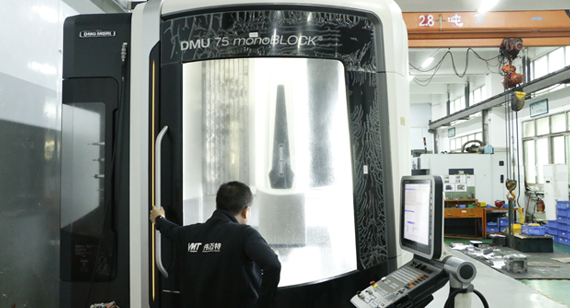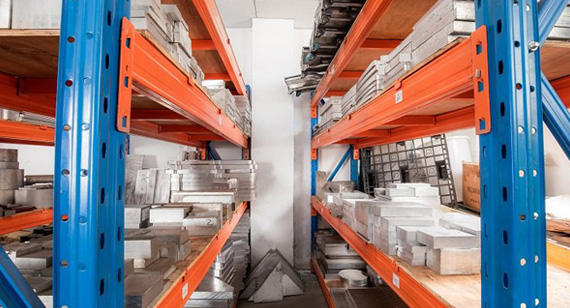15 years one-stop China custom CNC machining parts factory

Hey there I’m VMT Sam!
With 25 years of CNC machining experience we are committed to helping clients overcome 10000 complex part-processing challenges all to contribute to a better life through intelligent manufacturing. Contact us now
 120 |
Published by VMT at Jun 01 2024
120 |
Published by VMT at Jun 01 2024
Overview
With the rapid development of aerospace technology, CNC (Computer Numerical Control) machining plays a crucial role in the manufacturing of aerospace parts. CNC machining technology meets the special requirements of aerospace parts manufacturing with its high precision, efficiency, and flexibility. This article explores eight key aspects of CNC machining for aerospace parts, providing readers with a comprehensive understanding.

1. Importance of Lightweight Metals for Aircraft Performance
In the aerospace field, lightweight metals such as aluminum alloys and titanium alloys are widely used due to their high strength, light weight, and corrosion resistance. The use of lightweight metals reduces aircraft weight, improves fuel efficiency, increases load capacity, and enhances flight performance. CNC machining is a vital method for manufacturing these lightweight metal parts.

2. CNC Rapid Prototyping is Critical for Aerospace Development
Rapid prototyping in aerospace R&D quickly turns designs into physical models, facilitating performance testing and validation. CNC rapid prototyping uses precise computer control to manufacture high-precision part prototypes in a short time, significantly accelerating the development process.
3. 5-Axis CNC Machines Aid in Manufacturing Complex Designs
Aerospace parts often have complex geometries and require high precision. 5-axis CNC machining machines, with their multi-axis linkage capabilities, achieve high-precision machining of complex surfaces. This technology allows for the creation of aerospace parts with intricate design features, meeting the specific needs of the aerospace sector.

4. AI-Assisted CNC Machinery Drives the Future of Part Production
As artificial intelligence technology advances, AI-assisted CNC machinery is becoming a major trend in manufacturing. AI enhances process control, optimizes machining operations, and diagnoses faults, further improving production efficiency and quality stability of aerospace parts.
5. High-Quality Materials Elevate CNC Machining in Aerospace
High-quality materials are the foundation for manufacturing high-performance aerospace parts. With advancements in material science, new high-performance materials continue to emerge. These materials offer higher strength, better corrosion resistance, and lower density, providing more options for aerospace CNC machining. Using high-quality materials results in lighter, more efficient, and reliable aerospace parts.

6. How to Reduce the Manufacturing Costs of CNC Aerospace Parts?
Reducing manufacturing costs is a key concern in aerospace CNC machining. By optimizing machining processes, increasing equipment utilization, and reducing scrap rates, costs can be effectively lowered. Additionally, implementing advanced production management systems and automation equipment can further improve production efficiency and quality stability, thereby reducing manufacturing costs.
7. Quality Control is Crucial for CNC Machined Aerospace Parts
The quality of CNC machined aerospace parts is directly related to flight safety and mission success. Strict quality control measures must be implemented during manufacturing, including raw material inspection, process monitoring, and comprehensive product testing. Ensuring that parts meet relevant standards and requirements is vital for maintaining high quality.
8. Trends Shaping the Future of Aerospace CNC Machining
With continuous technological advancements and changing market demands, the aerospace CNC machining field faces new opportunities and challenges. Future trends include increased precision, efficiency, intelligence, and sustainability. As new materials and machining technologies emerge, the aerospace CNC machining sector will continue to expand and evolve.
Conclusion
CNC machining technology plays a vital role in manufacturing aerospace parts. By understanding the importance of lightweight metals, the advantages of CNC rapid prototyping, the application of 5-axis CNC machines, the development of AI-assisted CNC machinery, the use of high-quality materials, cost control strategies, the importance of quality control, and future trends, we can better master the key techniques and management methods for CNC machining aerospace parts. This knowledge will contribute significantly to the development of the aerospace industry.
Common Issues in CNC Machining Aerospace Parts
Despite the advantages of CNC technology, some common challenges and issues may arise during the CNC machining of aerospace parts:
1. Unstable Machining Precision
Aerospace parts require extremely high precision. Unstable machining precision can lead to degraded part performance or non-compliance with specifications. Causes may include machine wear, tool wear, and thermal deformation. Regular maintenance and calibration of machines, timely replacement of worn tools, and optimization of machining parameters are essential solutions.
2. Low Machining Efficiency
Time is often more critical than money in aerospace. Low machining efficiency can delay project timelines. Causes may include inefficient programming, improper tool selection, and incorrect cutting parameters. Improving efficiency requires optimizing programming strategies, selecting suitable tools and cutting parameters, and considering advanced techniques like parallel machining.
3. High Scrap Rates
High scrap rates increase manufacturing costs and can impact project timelines and delivery quality. Causes include material issues, improper machining processes, and operator errors. Reducing scrap rates involves strict material selection, optimized machining processes, enhanced operator training, and quality inspection and traceability mechanisms.
4. Poor Material Machinability
Aerospace materials often have unique machining properties such as high hardness and toughness. Poor machinability can lead to increased machining difficulty and tool wear. Solutions include selecting appropriate tools and cutting parameters, using suitable cooling and lubrication methods, and considering pre-treatment of materials to improve machinability.
5. Challenges in Machining Complex Parts
Aerospace parts often have complex geometries and dimensional requirements. Challenges may include difficult positioning, inadequate fixture design, and tool interference. Solutions include advanced positioning techniques and fixture design, optimized tool paths and cutting parameters, and simulation technology to predict and solve problems in advance.
6. CNC Programming and Operational Challenges
CNC programming and operation are core aspects of machining. The complexity and precision requirements are higher in aerospace. Addressing these challenges requires advanced programming techniques, operational skills, and effective communication and collaboration with engineers and technicians. Introducing automated programming and simulation technologies can also improve efficiency and accuracy.
7. Environmental and Sustainability Challenges
With increasing environmental awareness and stricter regulations, aerospace CNC machining also faces environmental and sustainability challenges. Solutions include adopting green machining techniques and energy-efficient equipment, reducing waste liquid and material emissions, and enhancing recycling and reuse of materials.
8. Supply Chain Management Issues
The manufacturing process of aerospace CNC parts often involves multiple suppliers and partners. Poor supply chain management can lead to material shortages and delivery delays. Solutions include strengthening supply chain coordination and management, establishing long-term stable partnerships with suppliers, and introducing advanced supply chain management technologies and systems.
By addressing and solving these common issues, we can improve the efficiency and quality stability of CNC machining aerospace parts, reduce manufacturing costs and scrap rates, and contribute more significantly to the aerospace industry's development.
Ready To Start Your Next Project?
Get Instant Quote

Request a Free Quote
Send us a message if you have any questions or request a quote. We will get back to you ASAP!